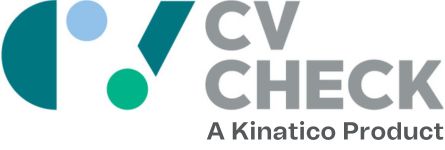Every organisation – whether it’s a one-person startup or a multinational – needs its own framework around recruitment. However, too often business owners and HR managers neglect that framework to the point where hiring practices and employee screenings are inconsistent, creating a wide range of risks.
Craig Sharp, General Counsel at CVCheck, explains the importance of implementing a standardised approach, and reveals the key benefits it can provide organisations.
What is a ‘standardised approach’ to employee screening?
“A standardised approach to screening could either be a written policy or a set of standard practices,” Sharp explains. “It’s about making sure there’s consistency in how you approach this particular task – just as you would have a consistent, standardised approach to anything else in your business.”
It’s important to recognise that “standardised” isn’t synonymous with “identical”. For example, the screening checks you require for a junior employee would not be the same for someone in the C-suite.
“If it’s a junior role that’s constantly supervised, the risks aren’t so high,” Sharp says. “You don’t need to be running all sorts of bankruptcy checks, for example. It wouldn’t make sense to spend money on those checks for such a role.
“But the process you use for determining how you go about hiring is the same. It’s an important business process that requires planning and support to make it standardised.”
When proper due diligence is conducted and the screening approach is deployed in a standardised manner, Sharp says its benefits are manifold, including:
• Reduced risk of ‘bad hires’ – and all the associated costs
Sharp says reducing the risk of hiring the wrong person is one of the biggest benefits of deploying a standardised approach. It ensures all credentials are verified and that the person you are hiring is actually competent enough and appropriately credentialed to perform the required duties.
Failure to do so, Sharp says, can have dire consequences for a business.
“Once you actually commit to an employee relationship, all sorts of things change,” he says. “First of all, there is the risk of having someone in a job who is doing the wrong thing – whether it’s a heart surgeon who is unqualified, or a person at your front desk who isn’t as honest or trustworthy as someone representing your brand should be.”
“Even if there is no actual harm before the truth is revealed, there is a cost in separating from this employee who represented the values of your brand. Once they have been hired, they have the rights of an employee and there are processes that must be followed.”
“It’s a lot harder to undo things in a contract than it is to avoid making that mistake in the first place.”
• Increased transparency and trust
Even before you make a candidate an offer, they will want to know the hiring company is transparent and trustworthy – in most instances, it will affect their final decision in whether or not to accept the position.
Sharp says being honest in your recruitment methods from the outset can positively influence a potential employee’s opinion of the company.
“Everything you do in your recruitment process influences your ultimate relationship with your employee,” he says. “It can say important things about how your company treats both people and risk, and it’s about balancing those two things.”
It also makes your existing staff more comfortable, as they will know for certain that new starters have undergone the appropriate screening before joining the team.
• Expectations are clear
In addition to transparency and trustworthiness, Sharp says the screening process can also reveal the culture of an organisation, whether it’s relaxed and optimistic, or more thorough and detailed in its activities.
“The screening process is an important part of that communication with your candidates,” Sharp says. “It helps set up your expectations for their role going ahead, and it demonstrates the culture you currently have and the culture you want to promote through your organisation.”
It’s also helpful for the hiring managers themselves, as they have clarity around what screening procedures are required for all roles.
• Streamlined hiring protocol
When it comes to getting buy-in from the C-suite about anything, the final decision is often made based on how it impacts the bottom line. Having a standardised approach to screening can reduce unnecessary expenses and protect the company against costly issues, such as making a bad hire. After all, studies show that in addition to lost time on recruitment and onboarding, replacing a bad hire can cost more than 50% of a person’s salary.
Building a streamlined framework around both the initial recruitment and interviewing processes, as well as the background checks, police checks and other screening procedures, can actually improve an organisation’s bottom line in both the short and long term.
A comprehensive framework can help you identify and manage risks
Hiring and firing decisions can often be contentious, but Sharp says a standardised framework helps business owners and HR managers identify risks to their organisation, determine what is acceptable risk and then guide them through the hiring minefield, avoiding those risks along the way.
The key is following company policy to the letter, and explaining in clear terms why a certain decision has been made.
“There are always risks associated with decisions relating to hiring – and firing – which is why there has to be a consistent process that is followed throughout the company,” Sharp says. “The opening of a simple answer is, ‘This is the process that we follow, and we have always followed it.’
“Explain that, ‘This is the result that was applied in this case for these reasons.’ Provided it’s a genuine business decision based on a realistic and reasonable assessment of the risk, then that’s all that stands.”
In all things, transparency is essential. That’s why a standardised approach with clear guidelines around your screening policy, as well as the framework for making high-risk decisions, is the heart and soul of a positive recruitment strategy.




